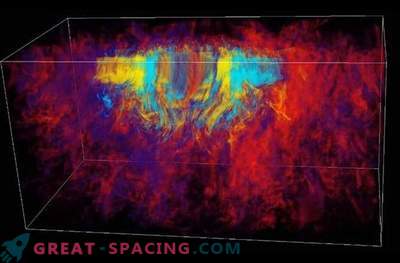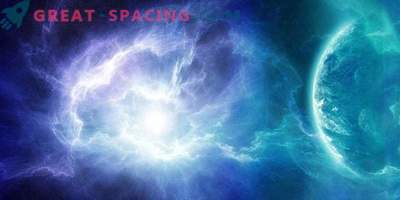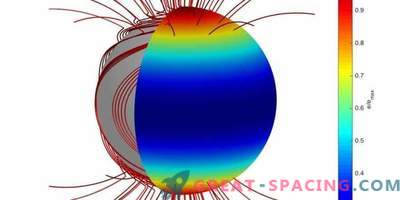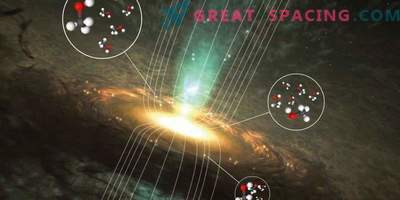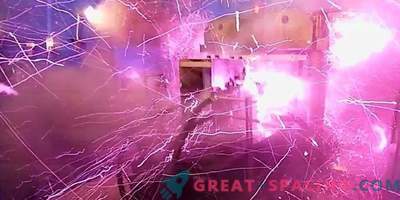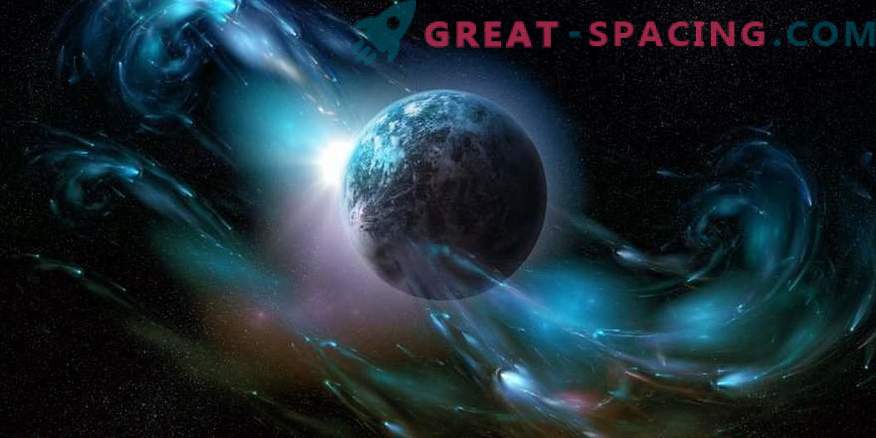
The Universe is considered to be an extremely magnetic place, where many planets and stars have their own magnetic fields. Astrophysicists have long been studying these amazing phenomena, creating theories that can explain the creation mechanism itself.
With the help of one of the most powerful laser systems in the world, researchers from the University of Chicago experimentally confirmed one of the most popular theories for creating a cosmic magnetic field - the turbulent dynamo. Having formed a hot turbulent plasma the size of a penny and lasting several billion fractions of a second, the scientists fixed how turbulent movements strengthen the weak magnetic field to the strengths observed in our Sun and in distant galaxies.
For the analysis, we used the FLASH simulation code, and the experiment itself was conducted at the OMEGA Laser Facility (Rochester, New York), where they recreated the turbulent conditions of the dynamo. The experiment showed that turbulent plasma can dramatically increase the weak magnetic field to the magnitude observed in stars and galaxies.
Now scientists know that there is a turbulent dynamo and this is one of the mechanisms that actually explain the magnetization of the Universe. The mechanical dynamo creates an electric current through the rotation of the coils in a magnetic field. In astrophysics, the dynamo theory points to the opposite: the movement of an electrically conducting fluid creates and maintains a magnetic field. At the beginning of the 20th century, Joseph Larm suggested that such a mechanism could explain terrestrial and solar magnetism, opening the discussion to many scientists. Numerical modeling indicated the possibility of turbulent plasma to generate magnetic fields on a stellar scale, but creating a turbulent dynamo in the laboratory is much more difficult. To confirm the theory, you need to bring the plasma at extremely high temperature conditions. At the same time, there must be inconsistency in order to generate a sufficient level of turbulence.
To conduct the experiment, scientists used several hundred 3D simulations with FLASH on the Mira supercomputer. The final setup included explosive parts of the foil with high-power lasers moving two plasma jets through the grids, thereby forming a turbulent motion of the fluid.
The team also used the FLASH models to develop two independent methods for measuring the magnetic field created by the plasma: proton radiography and polarized light. Both measurements tracked the growth of a nanosecond magnetic field from a weak starting state to an increase of more than 100 kilogauss (a million times stronger than the earth's magnetic field).
This work allows one to experimentally test ideas about the origin of magnetic fields in space. Now researchers can study deeper questions: how fast does the magnetic field increase, how strong is the region, and how does the turbulence change?
